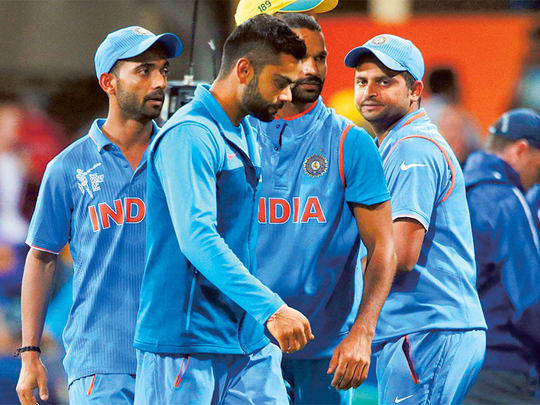
Melbourne: India’s defeat to Australia by 95 runs may be disappointing for millions of fans, but a close study will reveal that it was a combination of many factors that went against India. One may argue that One-day cricket is won by the team that plays well on that day.
Although India had put up a great show in the World Cup, the scars of their defeat to Australia in the tri-series, before the World Cup, had not been totally wiped away. Despite them putting up a brave face, India did fear the Australians and knew that to beat them, they would have to be at their best and hoped things would go their way.
For Indians to succeed, the best option would have been to win the toss and hope to bat first. Unfortunately that did not happen and they knew that should Australia pile up a big score, chasing that against Mitchell Johnson and company will not be easy.
Having lost the toss, the only way to put Australia under pressure was to bowl them out for a small score. India got the wicket of opener David Warner quickly, but they were unable to crack the partnership between Aaron Finch and Steven Smith. Their aggression too began to fade away slowly, allowing Smith, who had been in tremendous form against them all summer, to go on and get a century.
Even then India was still in the game, but towards the end of Australian innings they let Mitchell Johnson and James Faulkner score freely. The last five overs yielded 57 runs, helping Australia gain the psychological advantage of posting a total of over 300-plus runs.
Umesh Yadav did bowl a tight length but Mohammad Shami, in his eagerness to bounce the Australians out, bowled a number of short balls. This was the same mistake that Zaheer Khan had committed in the 2003 World Cup final in South Africa against Australia and had got thrashed. Shami, India’s strike bowler, went wicketless for 68 runs.
Despite the big score, India were still in the game after their openers Shikhar Dhawan and Rohit Sharma put on 76 runs. Virat Kohli, fully aware that his role was to stay at the wicket to anchor the innings, should have attempted the risky shot like the pull only after sighting the ball well. His wicket put additional pressure and Ajinkya Rahane failed to force the pace. Rahane then got out at a time when he should have started accelerating, but in the process took up 68 balls to score 44 runs.
Although Indian skipper Mahendra Singh Dhoni played a good knock, the lack of momentum resulted in the run-rate piling up. Australia’s fielding rose to the occasion and when Ravindra Jadeja got run out off a superb direct throw from Smith, the Australians got psychologically on top. When Dhoni, too, fell through a run out, the contest was as good as over.










